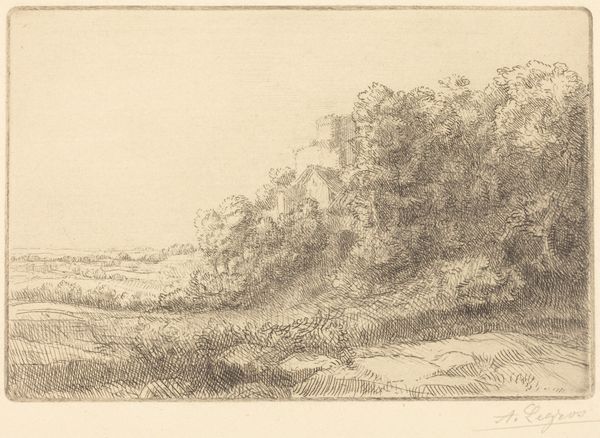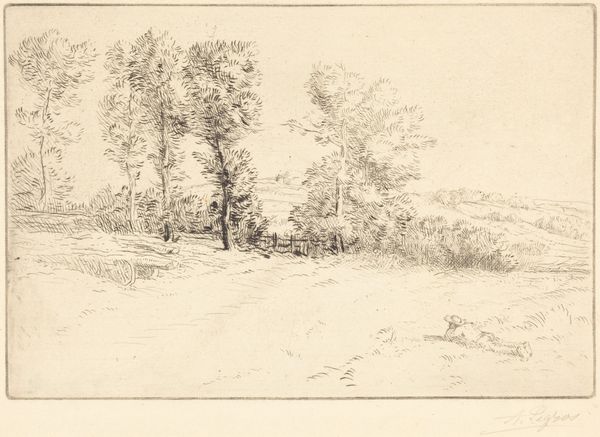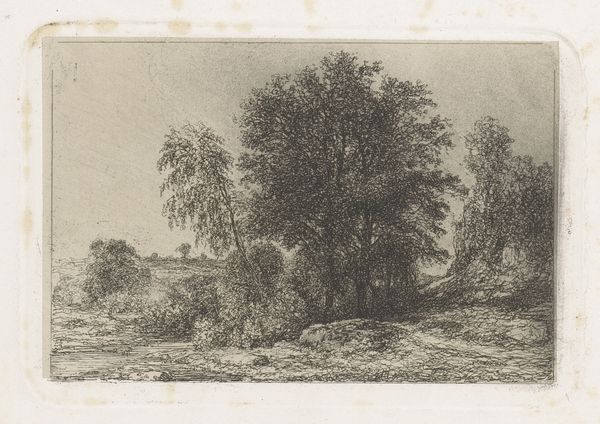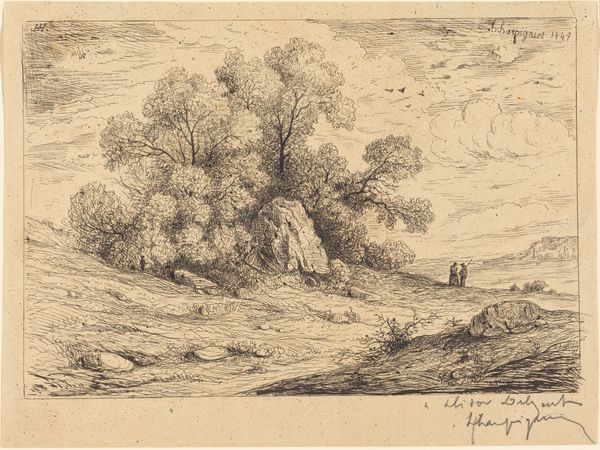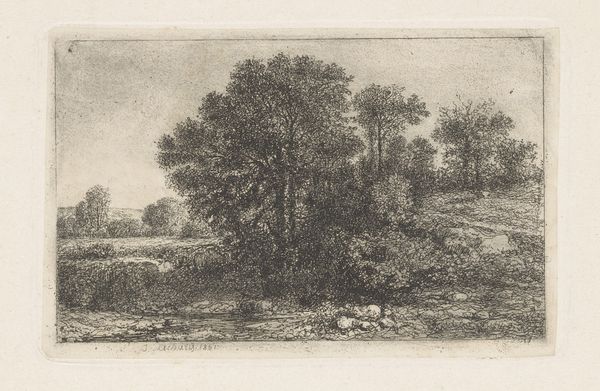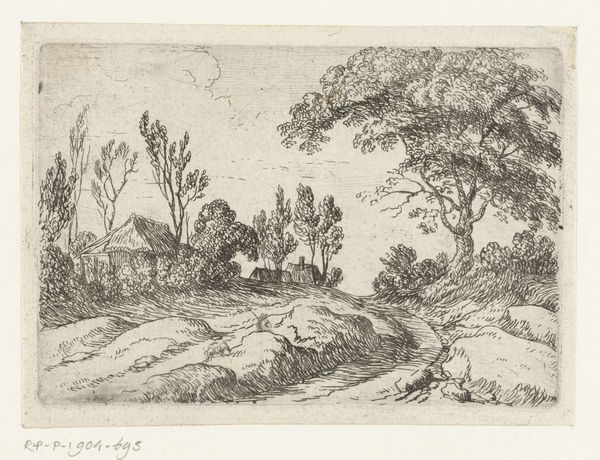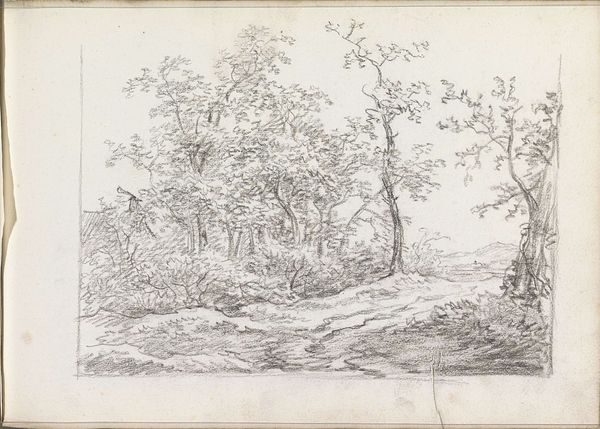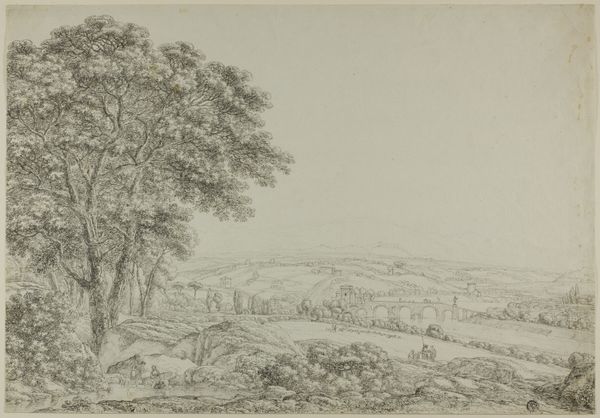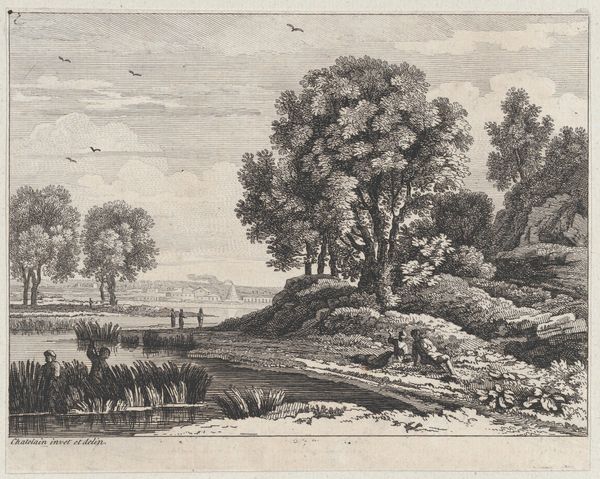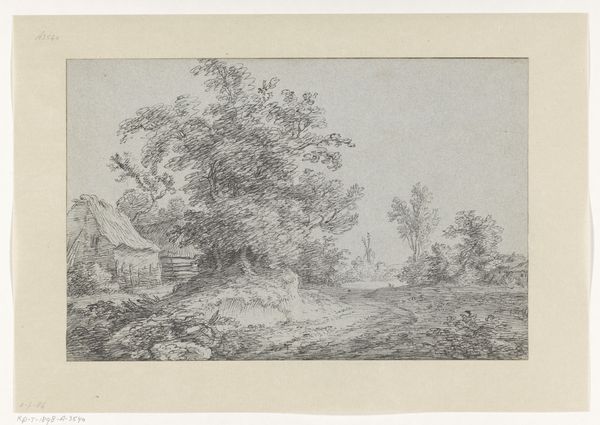
drawing, pencil
#
drawing
#
landscape
#
pencil
#
realism
Copyright: Rijks Museum: Open Domain
Editor: Here we have "House Among the Trees in the Countryside," a pencil drawing by Maria Vos, created around 1863-1864. There’s a stillness, almost a hushed quality to the scene that I find quite compelling. What do you see in this piece, particularly regarding its historical context? Curator: What strikes me is how this seemingly tranquil landscape interacts with notions of land ownership and social structures of 19th-century Netherlands. Consider the lives lived within that rustic house. The "romantic" depiction of rural life often obscures the harsh realities of agrarian labor and class divisions. This idealized view, though beautifully rendered by Vos, serves a particular narrative – one that may gloss over social inequalities inherent in rural society at that time. Does the artist challenge or reinforce this romantic perspective? Editor: That's a thought-provoking question! It makes me wonder if Vos intended to comment on these issues or if she was simply capturing the aesthetic beauty of the countryside. Is it possible for a landscape to be inherently political? Curator: Absolutely. Land, and its depiction, has always been a contested space. Whose stories are being told, and whose are being left out? Vos, as a female artist navigating a male-dominated art world, adds another layer to this. Were women afforded the same access to the artistic circles? How did gender shape her experiences and artistic choices when depicting landscapes? Her choices of subject, composition, the very act of creation becomes an act of representation that deserves interrogation. What is she choosing to reveal or conceal? Editor: So by looking at "House Among the Trees," we're not just appreciating a pretty picture but also engaging with complex social issues related to land, labor, and even gender in the 19th century? Curator: Precisely. By viewing it through a lens of social awareness, we unearth deeper meaning and see the artwork not as an isolated object, but as a historical artifact embedded in its time. It gives us room to understand power structures inherent in its own time. Editor: That’s really opened my eyes. I’ll definitely look at landscapes differently now. Curator: Wonderful! Art holds such potential once you begin unraveling these historical ties.
Comments
No comments
Be the first to comment and join the conversation on the ultimate creative platform.

